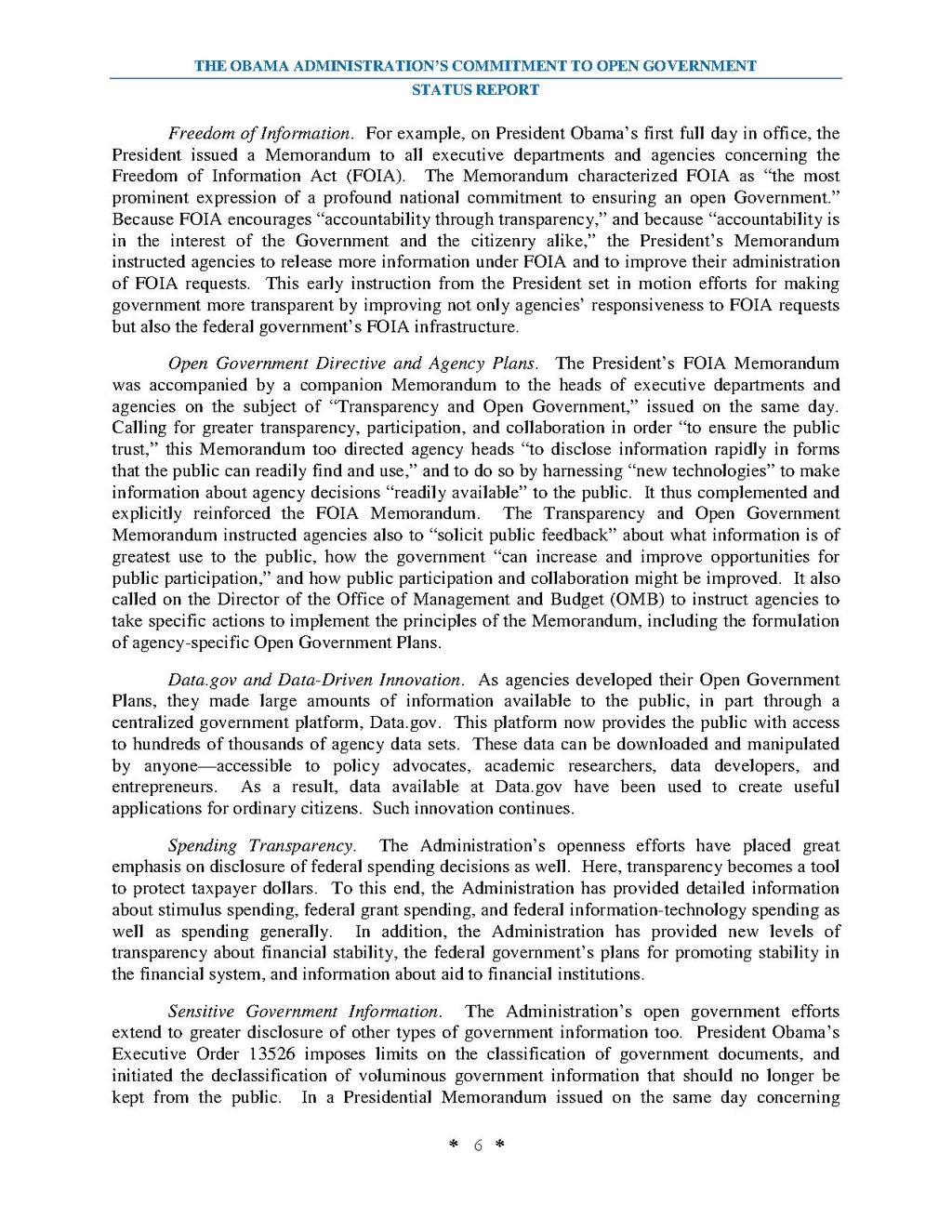STATUS REPORT
Freedom of Information. For example, on President Obama's first full day in office, the President issued a Memorandum to all executive departments and agencies concerning the Freedom of Information Act (FOIA). The Memorandum characterized FOIA as "the most prominent expression of a profound national commitment to ensuring an open Government." Because FOIA encourages "accountability through transparency," and because "accountability is in the interest of the Government and the citizenry alike," the President's Memorandum instructed agencies to release more information under FOIA and to improve their administration of FOIA requests. This early instruction from the President set in motion efforts for making government more transparent by improving not only agencies' responsiveness to FOIA requests but also the federal government's FOIA infrastructure.
Open Government Directive and Agency Plans. The President's FOIA Memorandum was accompanied by a companion Memorandum to the heads of executive departments and agencies on the subject of "Transparency and Open Government," issued on the same day. Calling for greater transparency, participation, and collaboration in order "to ensure the public trust," this Memorandum too directed agency heads "to disclose information rapidly in forms that the public can readily find and use," and to do so by harnessing "new technologies" to make information about agency decisions "readily available" to the public. It thus complemented and explicitly reinforced the FOIA Memorandum. The Transparency and Open Government Memorandum instructed agencies also to "solicit public feedback" about what information is of greatest use to the public, how the government "can increase and improve opportunities for public participation," and how public participation and collaboration might be improved. It also called on the Director of the Office of Management and Budget (OMB) to instruct agencies to take specific actions to implement the principles of the Memorandum, including the formulation of agency-specific Open Government Plans.
Data.gov and Data-Driven Innovation. As agencies developed their Open Government Plans, they made large amounts of information available to the public, in part through a centralized government platform, Data.gov. This platform now provides the public with access to hundreds of thousands of agency data sets. These data can be downloaded and manipulated by anyone—accessible to policy advocates, academic researchers, data developers, and entrepreneurs. As a result, data available at Data.gov have been used to create useful applications for ordinary citizens. Such innovation continues.
Spending Transparency. The Administration's openness efforts have placed great emphasis on disclosure of federal spending decisions as well. Here, transparency becomes a tool to protect taxpayer dollars. To this end, the Administration has provided detailed information about stimulus spending, federal grant spending, and federal information-technology spending as well as spending generally. In addition, the Administration has provided new levels of transparency about financial stability, the federal government's plans for promoting stability in the financial system, and information about aid to financial institutions.
Sensitive Government Information. The Administration's open government efforts extend to greater disclosure of other types of government information too. President Obama's Executive Order 13526 imposes limits on the classification of government documents, and initiated the declassification of voluminous government information that should no longer be kept from the public. In a Presidential Memorandum issued on the same day concerning
6
